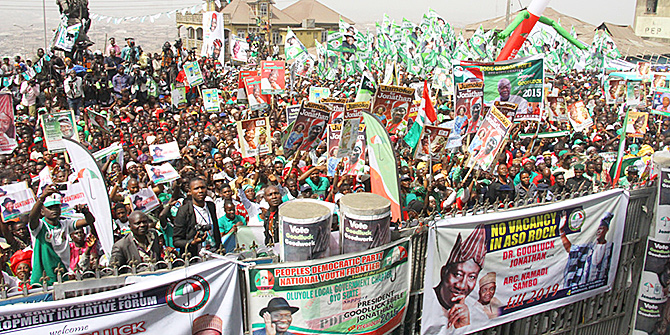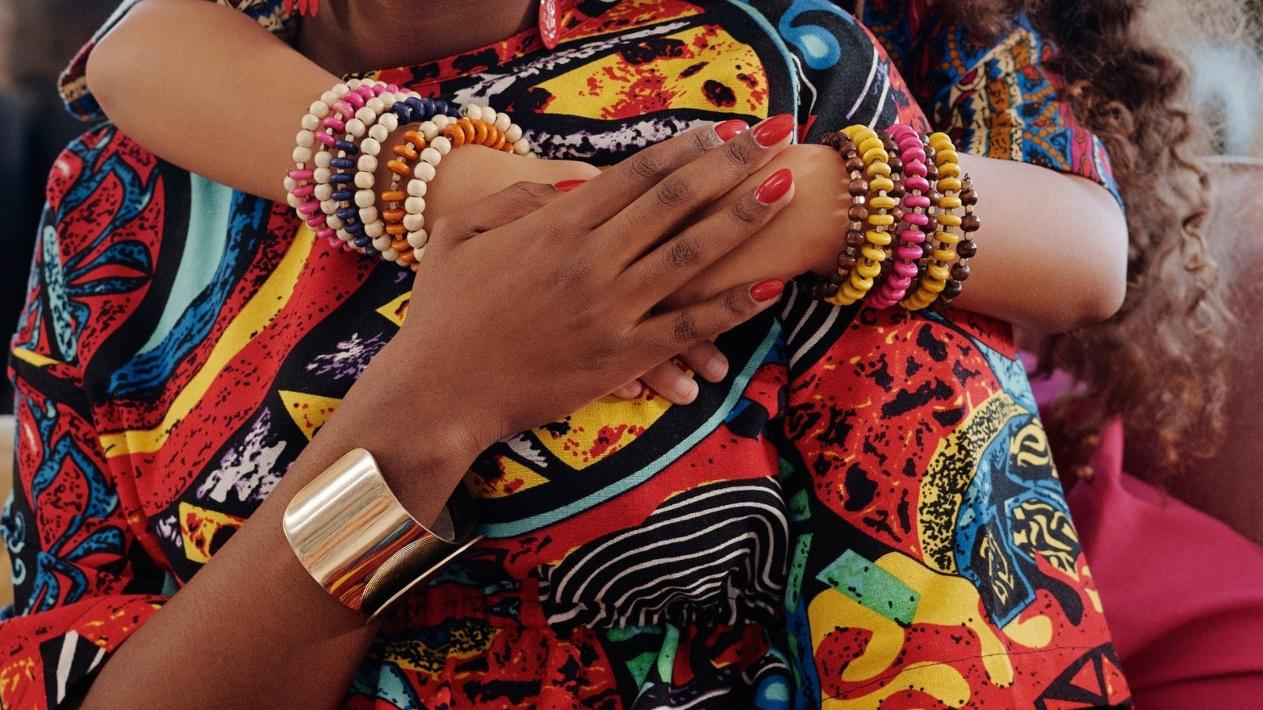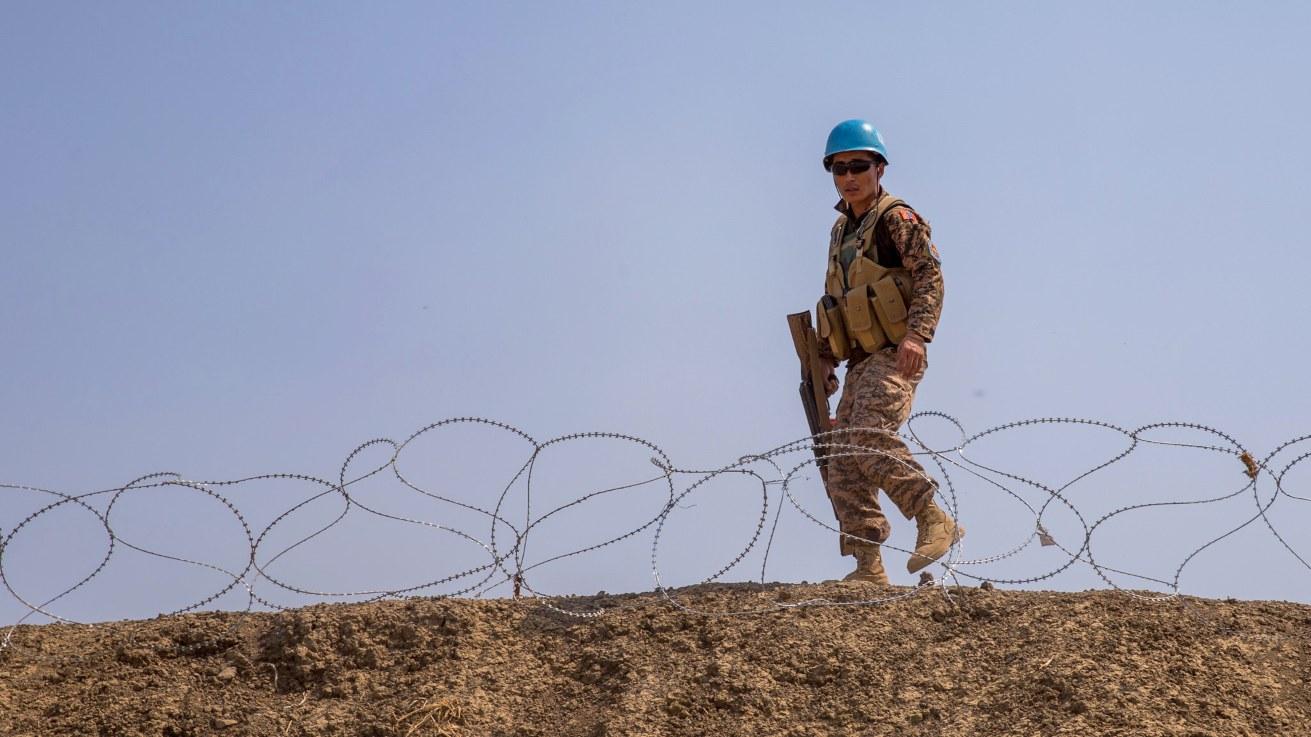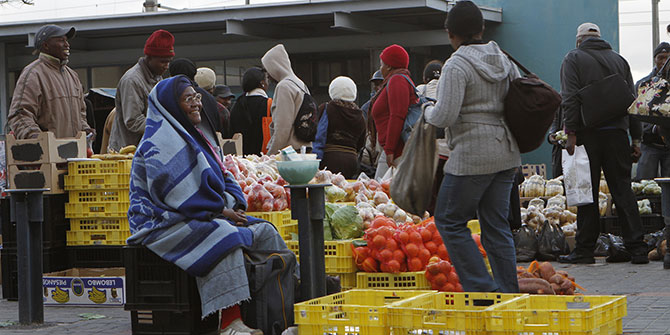After decades of armed conflict in South Sudan and Uganda, labels of ‘refugee’ and ‘internally displaced person’ fail to reflect the complex realities of the people they refer to. Leben Moro examines the history of movement across the region’s borders, and argues refugees are not the passive recipients of aid as often presented by humanitarian initiatives.
Since independence from British colonial rule, large numbers of South Sudanese and Ugandans have repeatedly crossed the shared border to escape civil wars. These forced movements of large populations have created shifting labels of ‘refugees’ and ‘internally displaced persons’ (IDPs), with tremendous social, economic and political repercussions for the persons to which these labels are applied.
In August 1955, months before Sudan’s independence, the largely Christian Southern Sudanese took up arms against Muslim rulers in the North to achieve a vision of greater regional autonomy, which sparked a mass flight of people from their homes. By the end of the First Sudanese Civil War in 1972, the Sudanese government estimated that 500,000 people had hidden in the bush, and another 180,000 had crossed into neighbouring countries, with 74,000 settling in four official camps (Onigo, Agago, Acholpii and Nakapiripirit) in northern Uganda. Many of the displaced persons, including my own family members, self-settled in other parts of Uganda, mainly near cotton ginning mills and other businesses operated by Ugandans of Indian origin, who employed them as casual labourers.
My own family members settled near Gulu, the largest town in northern Uganda, among the Acholi ethnic group. Some South Sudanese journeyed southwards to Bwelye in the centre of Uganda, where there was plentiful fertile land and jobs in Indian enterprises. Others travelled further south into the heartland of the Baganda, the largest tribe in the country, to work in sugar plantations and different enterprises, including fields where locals grew coffee, bananas and other crops.
Over time, many newcomers acquired land with their earnings and became poll taxpayers. Their receipt documentation allowed them to move across land in relative safety. In general, however, life was hard as they lacked citizenship and were vulnerable to exploitation and harassment.
The United Nations High Commissioner for Refugees (UNHCR) coordinated a programme of official repatriation, supported by public authorities in Sudan and Uganda, including a mandate that supported Sudan’s IDPs. Many people, however, chose not to leave.
In 1979, Uganda became embroiled in a bitter civil war following the overthrow of President Idi Amin Dada, forcing Southern Sudanese, including my own family members, and many Ugandans from the north of the country, to flee into the relatively peaceful Southern Sudan. The UNHCR and other humanitarian organisations as well as public authorities in Sudan helped settle many refugees in camps, but some Ugandans settled among local people, initially without external support.
The relative peace in Southern Sudan was disrupted in 1983 when the Sudan People’s Liberation Movement/Army (SPLM/A) was founded to lead another armed struggle against Sudan’s newly declared Islamic state under President Gaafar Nimeiry – which came to be known as the Second Sudanese Civil War. The violence forced Ugandan peoples living in Southern Sudan back into Uganda and many Southern Sudanese also made the crossing. Some of the refugees returned to locations they had lived in during the first civil war or joined relatives or friends who had remained in Uganda. People used their established networks.
The new wave of refugees received generous assistance from the UNHCR and the Ugandan government, whose policy was the settlement of refugees in camps and dedicated areas. Effectively, the policy redefined a refugee as ‘someone receiving assistance and living in a camp’. Many displaced Southern Sudanese avoided encampment, with its associated restrictions of movement, by self-settling among locals or dividing their family members or time between camps and outside locations.
As in the first civil war, many displaced persons in Southern Sudan did not cross international borders, but remained behind in dire circumstances. Their plight forced the United Nations to launch another initiative, Operation Lifeline Sudan, in the 1980s to assist those trapped in the war zone. This suffering formally ceased in 2005 with the conclusion of the much-lauded Comprehensive Peace Agreement between the Sudanese government and the SPLM/A, enabling the return of the IDPs to their original homes and refugees back to the country.
In 2011, Southern Sudan seceded from Sudan. About two years later, the world’s newest country relapsed into a vicious civil war. Sparked by divisions among the country’s key leaders, ethnic identities were subsequently exploited to mobilise fighters with devastating consequences for national unity and the wellbeing of civilians.
During the conflict, many Nuer people, an ethnic group primarily inhabiting South Sudan’s Nile Valley, fled into areas created on UN Mission in South Sudan (UNMISS) bases, called Protection of Civilians Sites (PoCs), to escape killing by members of the Dinka, the largest ethnic group, who had effectively taken over the country with the support of Ugandan soldiers. Nuer fighters retaliated against Dinka civilians, forcing many to flee to the Uganda border and other locations.
Many South Sudanese headed north into the new Republic of Sudan, where public authorities labelled them ’arrivals’, a new term with no precedent in refugee policy or literature, and confined them to ‘waiting stations’. Uganda also received a large number of displaced persons, among them refugees placed in settlements with international assistance. Many displaced persons settled among locals without external assistance, thus avoiding the label of ‘refugee’.
What it means to be ‘refugees’ in Uganda
The 1951 Refugee Convention states a person becomes a refugee after crossing an internationally recognised border in search of protection, recognition and status by public authorities in the asylum country or the UNHCR. When the circumstances that forced the person to seek refuge cease to exist, the refugee re-avails themselves of the country’s protection they had fled. Thus defined concrete international borders are characterised as integral to becoming a refugee or ending refuge.
For South Sudanese displaced persons, the border between their country and Uganda is not a clearly defined line separating two jurisdictions. Many parts of the border are contested by ordinary people and public authorities on both sides. Consequently, people inhabiting locations along these contested areas are not always on peaceful terms despite often belonging to the same ethnic groups, such as the Acholi of South Sudan and Uganda.
Different ethnic groups that have seen clashes over contested territories have also been forced into settling in areas of close proximity following unrest in their respective homelands. My own research reveals the Kuku of Kajokeji in South Sudan were so suspicious of the Madi in the Ugandan Moyo district that, when they settled in the latter’s region, they avoided treatment in the Moyo hospital for fear of maltreatment by Madi medical personnel. The history of conflict over certain borders has a direct bearing on the welfare of refugees in the present.
Armed groups and criminals also operate along the border, posing serious security problems, with some people losing their lives at the hands of unknown gunmen. Despite this danger, refugees and other South Sudanese cross in and out of South Sudan for matters of family and livelihoods, such as to harvest crops in their old fields due to food shortages in their new home. Others return their deceased kin to bury them decently on their old compounds and, further, trips are made to the national capital, Juba, to visit relatives or deal with administrative issues.
These movements defy the legal meaning of ‘refugee’, who is supposed to return home when the threat of persecution that caused the flight is over. They demonstrate that refugees are not the passive and docile recipients of aid, as often presented, but active individuals who exercise agency. Studies remind us that were refugees only to eat the ‘food which is distributed to them, they would die’.
What it means to stay behind as an IDP
Because IDPs are citizens living in their native county they are entitled to the same rights and legal protections as fellow citizens as stipulated by the constitution. In reality, IDPs do not always enjoy citizenship rights because those in power consider them enemies or supporters of enemies.
During the second civil war, the Sudanese government branded IDPs as rebel supporters and subjected them to all kinds of punitive measures, including starvation and denial of basic services. Many IDPs consequently starved to death or died due to deadly diseases, such as kala azar, as the already rudimentary healthcare system in pre-war Southern Sudan was destroyed by repeated military bombardments as well as frequent obstructions of international humanitarian access.
When South Sudan gained independence and descended into civil war, IDPs did not fare any better. Following shocking atrocities and the continued risk of further violence, many Nuer civilians remain in PoCs on UNMISS bases under the protection of peacekeepers in refugee-like situations. Deprived of state protection, their situation has become worse than most refugees in South Sudan, deprioritised over the dominant Dinka.
The labels of ‘refugee’ and ‘internally displaced person’ do not reflect the experiences of most South Sudanese refugees in Uganda, and IDPs within South Sudan. These terms present refugees and IDPs as powerless recipients of aid when, in reality, refugees and IDPs are active agents in efforts to improve their situation. In some cases, they creatively manipulate borders and the systems in place to satisfy their basic needs.
It has been expressed that South Sudanese refugees have shown an extraordinary creativity and resourcefulness that can form a blueprint for future refugee assistance programmes. When ‘official legal categories rarely match realities on the ground’, aid workers should now appreciate and encourage the active involvement of refugees and IDPs to address the challenges that confront them.
Dr. Leben Nelson Moro is Director of Planning, Innovations and Quality Assurance and former Director of Institute of Peace, Development and Security Studies at the University of Juba. He mainly conducts research on forced displacement in South Sudan. He received his DPhil in Development Studies from the University of Oxford.
Photo: A European Union Civil Protection and Humanitarian Aid staffer with a young girl inside the Imvepi refugee settlement in Arua district, northwestern Uganda. Credit: EU/ECHO/Edward Echwalu
The views expressed in this post are those of the author and in no way reflect those of the Africa at LSE blog, the Firoz Lalji Centre for Africa or the London School of Economics and Political Science.






Its a very fruitful masterpiece, brief but full of vital information